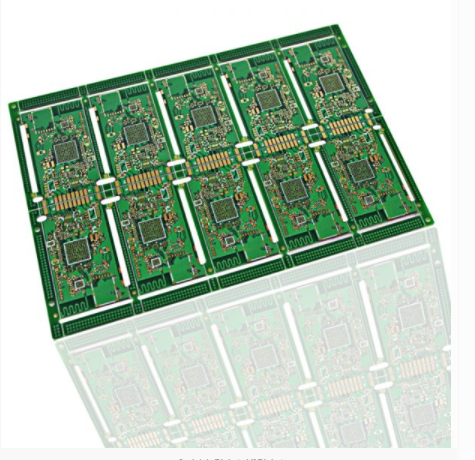Via technology of circuit board factory
Looking at a complex PCB circuit board, such as the main board of a computer, you may find that several tracks have nowhere to go and terminate suddenly. However, a closer inspection with a magnifying glass will reveal more details at the end of the track. Most likely, you will see that it ends with a small circuit board pad, not much larger than the width of the track itself, with one or no hole in its center. This is about the via technology of the circuit board factory.
In fact, the track does not end, but continues to travel, albeit on a different layer, hidden under the outermost layer of the PCB circuit board. The end of the pad is actually a small tube passing through the insulating material, electrically connecting the two parts of the track. In the terminology of circuit board proofing manufacturers, this arrangement that allows the track to continue but on a different layer is called a circuit board through hole.
The multi-layer PCB circuit boards of circuit board proofing manufacturers use different types of vias for various purposes. There may be through-hole vias, blind vias and buried vias in the same circuit board. Although the structure of all vias is the same, their naming depends on the origin and termination layer. For example, a through hole originating from the outermost layer, passing through the board and terminating in another outermost layer is a through hole. During its passage through the layers of the board, it can be connected or not connected to the intermediate layer depending on the necessity of the circuit.

The blind hole comes from one of the outermost layers, but ends in the middle layer, so it is only visible on the starting layer. It may or may not connect to other layers in between. The buried via cannot be seen from any of the outermost layers, because it originates from one inner layer and ends in another inner layer, possibly connecting other layers in between. By design, the through hole consists of two external pads and a copper tube that electrically connects them. Two external pads are located on the originating and terminating layers of the PCB circuit board, and the anti-pads on all intermediate layers allow the copper tube to be electrically isolated from the circuits on these layers when these layers pass.
Although the two external pads and anti-pads are part of the layout pattern, the circuit board proofing manufacturer etches them onto the PCB circuit board, but the electrodeposition process forms a copper tube connecting the two. Although through holes may be found in conventional PCB multi-layer circuit boards, these are less likely to be in high-density interconnection or HDI circuit boards.